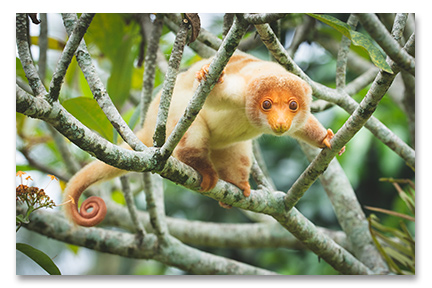 |
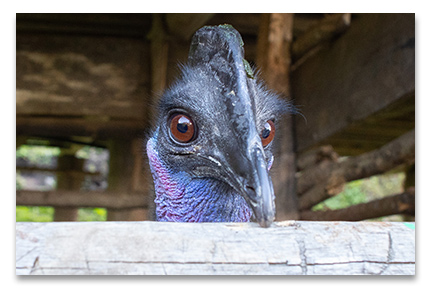 |
 |
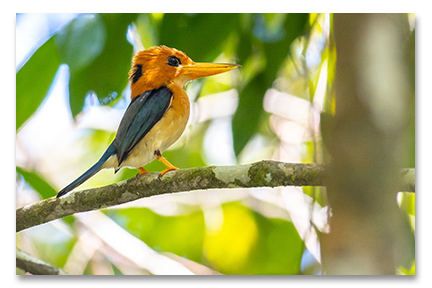 |
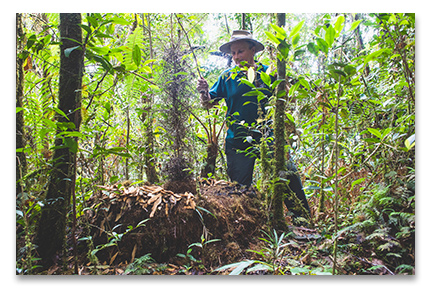 |
 |
 |
 |
 |
 |
 |
 |
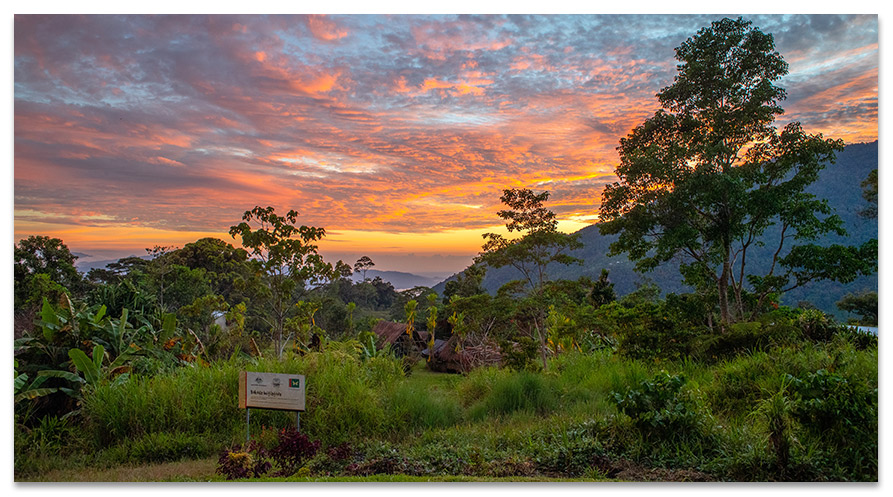
Background
Depending on your point of view, there are five SE New Guinea endemics in the Owen Stanley Range that are very difficult to access.
Eastern Parotia (IOC, Pratt/Beehler also
Gregory (in publication), but not Clements/ebird or HBW/BirdLife)
Lesser (Eastern) Superb Bird of Paradise (IOC, Clements &
Gregory (in publication) but not Pratt/Beehler, ebird or HBW/BirdLife)
Dimorphic Jewel-babbler (Accepted by all except Clements?)
Streaked Bowerbird (Accepted by all)
Eastern Alpine Mannikin (Accepted by all)
These can all be accessed via the Kokoda Trail with a moderate/severe degree of effort. Logistics are easiest for the first three which occur along the first 15km of the trail from Kokoda (350m) to the Isurava Memorial (1350m). The Bowerbird and Mannikin occur in the central part of the Kokoda Trail requiring perhaps 9 days hard walking or air drop.
The lovely Isurava village makes for a great base from which to explore. I was there 4 nights and could have done with 2 more. You are very well looked after by the Kokoda Crossing team. Combining the wildlife aspect with the historical interest plus an insight into the daily lives of these amazing people, makes for a great experience.
The entire Kokoda Track from Kokoda Village to Ower's corner is 96km. It is a well known serious hike up and down the muddy mountain slopes. About 3000 trekkers do the pilgrimage every year and maybe 1,000 visit the Isurava Memorial on Anzac Day. It is almost unthinkable that anyone would attempt to fight a war in this inhospitable terrain.
https://dominicchaplin.smugmug.com/Kokoda-Area-Maps/
Isurava village was visited in March 2014 by Thane Pratt and artist Szabolcs Kokay as part of their month long trip along the Kokoda Track. Kokay photographed Eastern Parotia and a court near to the village and also remarkably photographed a Chestnut-shouldered Goshawk. You can read about their experience here: Australia BirdLife June 2016 https://en.calameo.com/read/004107895d3878ce2d031
In Oct 2002 Ed Scholes filmed the Eastern
Parotia at Mt Suckling
https://search.macaulaylibrary.org/catalog?taxonCode=lawpar2&view=List&q=Lawes%27s%20Parotia%20(Eastern)
More recently in June, 2019, Rockjumper guide Adam Walleyn visited along with his client Jim Holmes. They recorded multiple ebird lists along the track recording the Parotia, Superb BOP, Jewel-babbler and a number of other species rarely recorded including Oriental Hobby, Bicoloured Mouse-warbler, White-eyed Robin, Forbe's Forest Rail, Mountain Kingfisher, Olive Straightbill, Black-billed Sicklebill, Black-capped Catbird and the mythical Mottled Berryhunter.
As recommended by Adam I made the travel arrangements with Travis Hocart of Kokoda Crossing https://kokodacrossing.com/ who was very good.
Logistics
Flight Port Moresby to Popondetta (30 mins) Air Niugini
Car/PMV Popondetta Airport to Popondetta
to Kokoda (3-4 hours plus wait for transfer at Popondetta 3-7
hours)
It would be better to get a charter flight direct to Kokoda but
these are irregular and perhaps full in the trekking season (April-Oct)
Walk Kokoda to Isurava. This is about 12km including a 1000m rise in altitude, plus some ups and downs. I had the same guide as Adam, Zedee, who has amazingly walked the Kokoda Track 100 times, plus a cook, Norman. We walked about one hour to Hoi Village on the first evening, then up to Isurava via Deniki Village the next day (7 hours at very slow birding pace). It is a great experience even for non-birders. Some rigorous fitness training before leaving home could be a good idea. You don't need heavy boots, training shoes are fine. The locals will be in bare feet or thongs/flip flops. Papuan Black Snakes were seen twice on the track and one Kokoda villager was bitten while I was there.
What to take: Empty 600mm plastic coca-cola bottle plus supply of Puritabs or similar for water purification. There are plenty of streams along the track. I also add Hydralyte electrolyte tablets which make the water taste more interesting, training shoes, sleeping mat, sleeping bag, 1 spare shirt, spare socks/pants, 1 spare trousers, Museli bars, power pack for phone (there is sporadic phone coverage at Isurava), phone, gps, notebook, bird book etc. Don't take too much as someone is going to have to carry it uphill.
Accomodation is in village guest houses but inside a tent to repel mosquitos. Actually I didn't notice too many but biting March Flies were a nuisance.
Weather
Weather was fine the whole time except some rain at Kokoda on the last day. As in Cairns, the rainy season used to start in about December, but with climate change it is becoming delayed more every year. Hot and steamy on the coast. Very pleasant at Isurava but humid. Upon entering the forest, it was the usual New Guinea situation - glasses steam up, binoculars steam up, all the birds are hiding, activity is very low and you can't see a thing.
Birds
Eastern Parotia - Both male and female birds were regularly heard and occasionally glimpsed, mainly above the village. Their range here is about 1350-1800m. One bird only was heard below the Village, with the rest being along the Kokoda Track to the Isurava Memorial and in nice forest above the track along a path to a Japanese fighter plane crash.
We found and photographed one court on a ridge above the plane crash at 1785m 8.97468 / 147.72467 and Zedee found one more a few tens of meters further along the same ridge. Kokay recorded one court below the Kokoda Track south of the village at about 1350m. This was shown to him by villager Ivan Nitua.
Lesser (Eastern) Superb Bird of Paradise - Adam Walleyn recorded this in several locations above the village. But I didn't see or hear this bird once. Perhaps they move to higher elevation or go quiet at this time of year? Perhaps poor field skills? Perhaps more easily seen at Kagi Village further south?
Dimorphic Jewel-babbler - The distinctive high pitched whining call of this species was heard at 3 locations in tiny scraps of remnant forest along the track near Deniki. They did call also in response to playback but never came out. Seen by Adam and Jim in June. Adam's recording of the call is here: https://ebird.org/checklist/S59011211 The way to see this species would be to spend the night at Deniki village. They were calling in the good forest just a few 100m above Deniki. There could be a good chance of them at first light.
Above Hoi village in scrappy forest patch:
670m 8.93275 / 147. 74506
Just past Deniki in good forest: 817m 8.93683 / 147.74511
Further up past Deniki in tiny section of good forest: 890m 8.94387
/ 147.74753
Oriental Hobby - Strangely the most obvious bird at Isurava. 3 birds flying overhead, Calling loudly and all day perched on a dead branch just past the village at 8.97117 / 147.73152 1392m
Dwarf Cassowary - One poor young bird kept under a house at the Isurava monument and another fully grown bird kept under lock and key in a terrible tin shed at Kokoda Village. One scat on the Kokoda Track at 8.952049 / 147.74547 983m
Forbe's Forest Rail - Two birds calling along the track to the Isurava Memorial at 8.97804 / 147.73228 1421m. Sensational call! Then one other bird calling and finally seen on the South Plane Crash track at 8.97711 / 147.72789 1634m
White-eyed Robin - Very difficult to see. One travelling along 30cm from the ground on the North Plane Crash track at 8.972383 / 147.73049 1458m
Black-capped Catbird - Heard from my hut on the far southern side of the village and seen by Adam along the North Plane Crash track.
Mountain Kingfisher - One photographed and two heard along a ridge just North of Isurava village. 8.96285 / 147.73519 1267m
Bicoloured Mouse-warbler - A group of 4-5 seen along the track to the Isurava Memorial at 8.97654 / 147.73191 1435m Clearly very different to Rusty Mouse-warblers also seen on the same track. Very dark above and bright orange below.
MacGregor's Bowerbird - One fantastic huge old bower next to the path on a ridgetop above the plane crash at 8.97522 / 147.72445 1781m. One small startup cleared area for bower close to the Eastern Parotia Court detailed above.
Magnificent BOP - Regularly heard along the track and 3 seen in one fruiting tree below the village only. One court at 8.96487 / 147.73502 1277m another at 8.97409 / 147.73454 1313m
Raggiana BOP - Heard regularly along much of the track from before Hoi village to past Isurava
Growling Riflebird - Heard all day both above and below the village. One seen in flypast
Mottled Berryhunter - Not a peep, neither seen nor heard. Perhaps goes quiet, moves uphill or goes back deep into its burrows this time of year???
Silver-eared Honeyeater - These were a surprise and very pleasant distraction at the Popondetta Comfort Inn with perhaps 10 in the hotel gardens, particularly in flowering bushes at the back.
Chestnut-shouldered Goshawk - Unfortunately no sign of the bird photographed by Kokay in 2014.
Streaked Bowerbird - Very few people ever see this spectacular species which inhabits the southern watershed of the Owen Stanley range and is not at Isurava. There are ebird records near to Efogi (1350m) from 1981 and at Kagi (1400m) in 1991. Cliff Frith photographed it near Kagi. Guide Zedee also suggested Menari (850m). Thane and Kokay were shown a bower by local landowner Gaksy Siosi nearby at Brigade Hill. Reaching Kagi by foot would require a serious 4 day walk in each direction. But in the season there are trekking supply planes to both Efogi and Kagi airstrips. It is only 65km from Pt Moresby. Travis at Kokoda Crossing could perhaps arrange this. Helicopter hire might be an option? Phil Gregory also has a contact who knows of a bower.
Eastern Alpine Mannikin - Very rarely reported. Again this is not at Isurava. ebird records from 1992 at Sinove, near Myola (2000m) and above Kagi.
Tree Kangaroos -, Goodfellow's and Doria's Tree-Kangaroo could be present here. Zedee said they went hunting above Alola village, South of Isurava, earlier in the year. They caught 18 Tree-Kangaroos in two days, plus some small Cuscus. While this is sad, it is hopefully indicative of a good local population. The Kokoda Track is but a thin ribbon through a large sparsely habited area and hopefully the logistics of travel throughout the rest of the Owen Stanley range will give the wildlife of this area some respite from the growing human population.
dominic@pinecreekpictures.com.au
Cairns, Queensland, Australia, Dec 2019
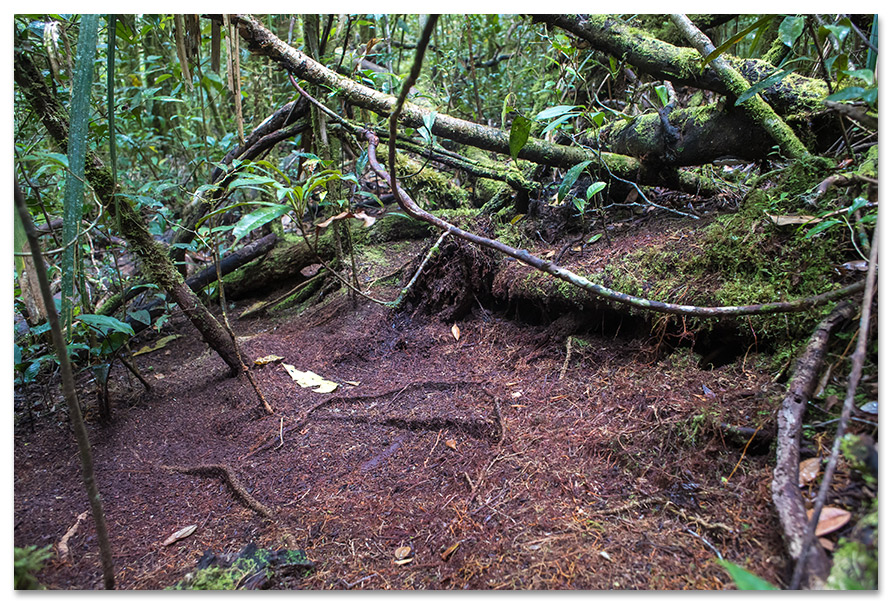
Eastern Parotia Court, Isurava, Kokoda Track, Papua New Guinea